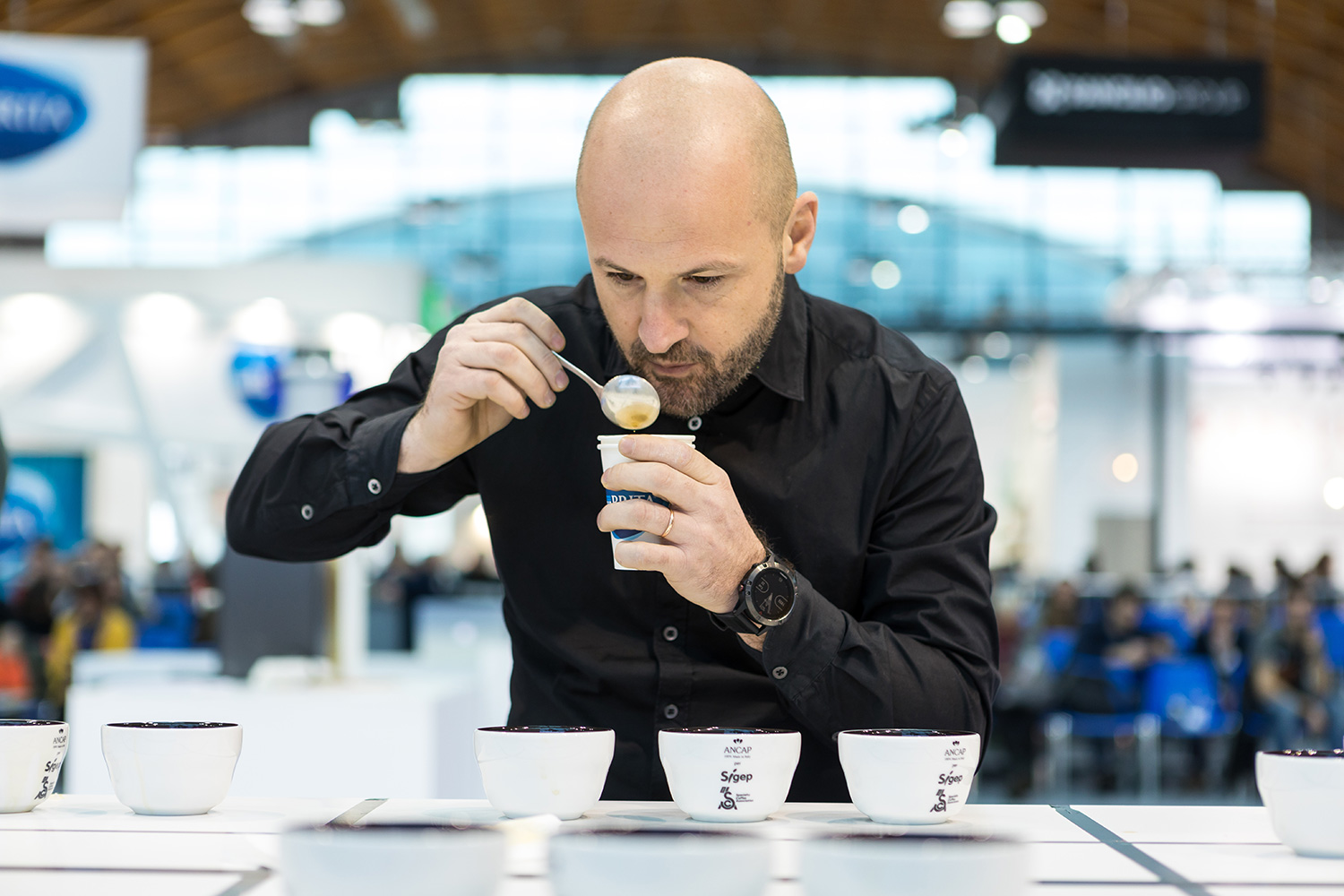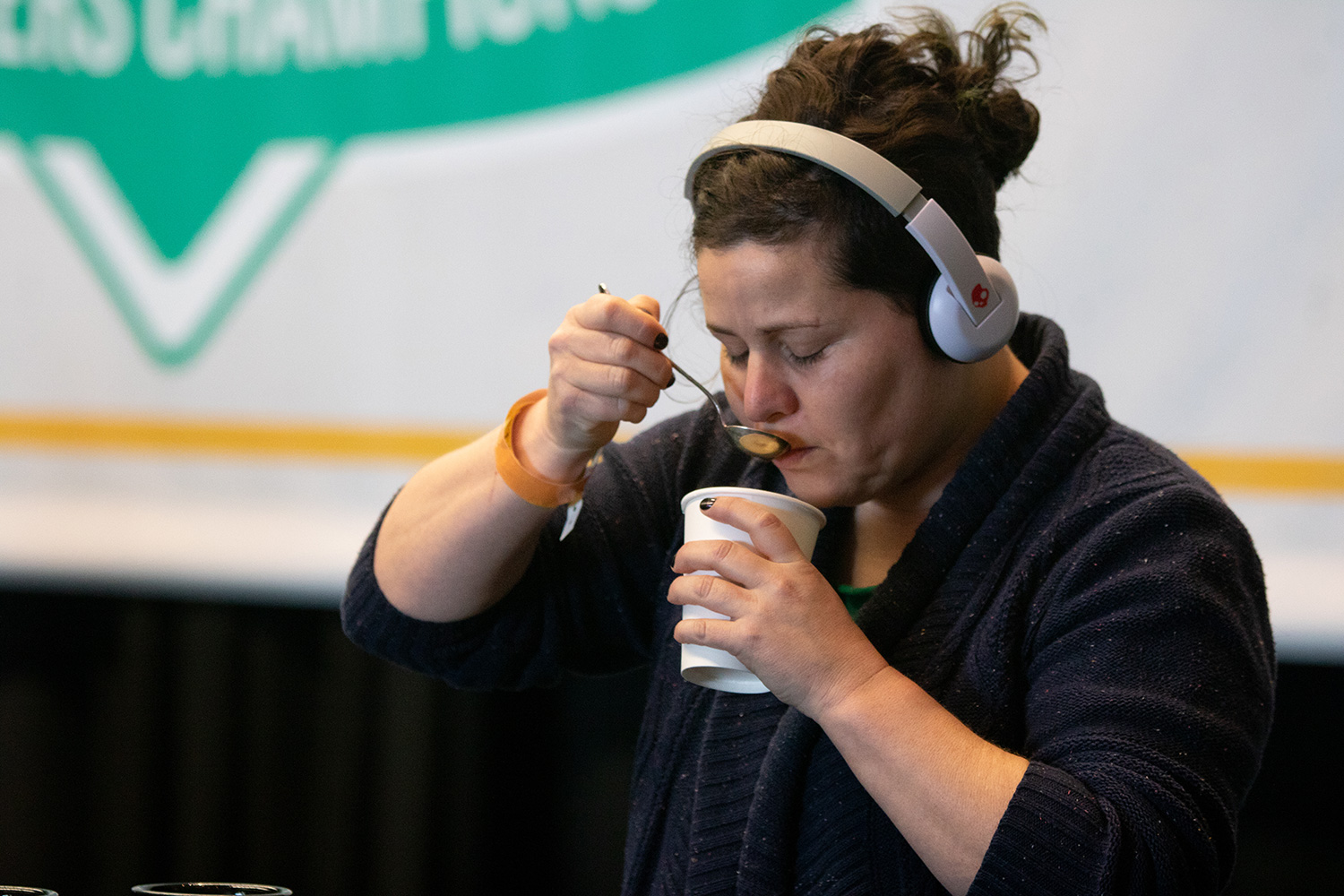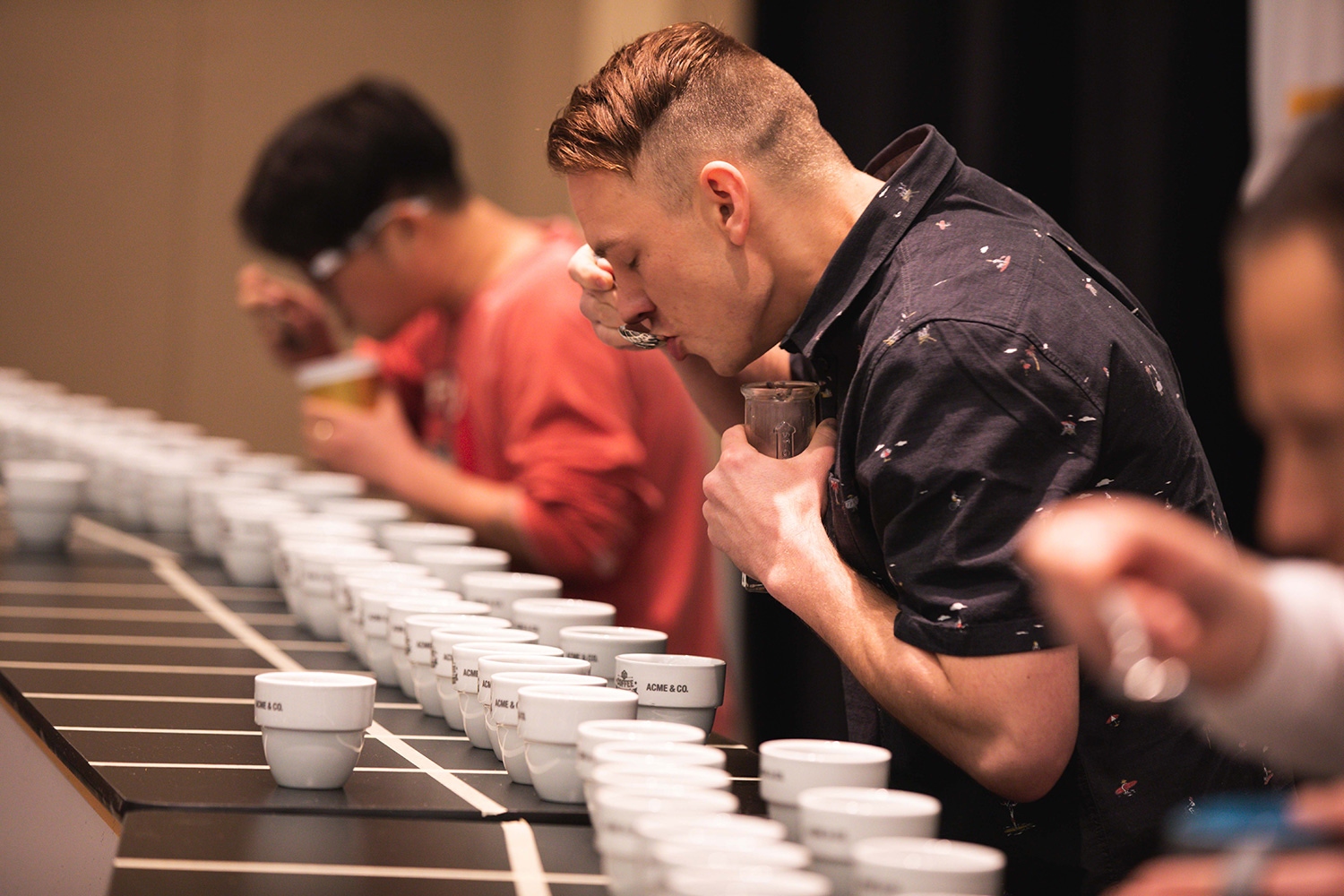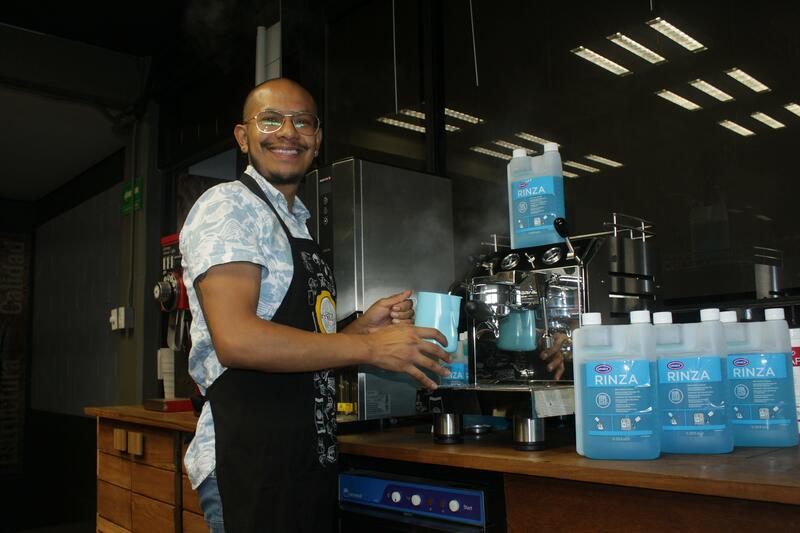 Tasting coffee is a complicated exercise. There are so many factors that contribute to a coffee’s taste, and so many possible characteristics in the cup, that it takes hours, months, years of practice to develop a strong coffee palate.
Tasting coffee is a complicated exercise. There are so many factors that contribute to a coffee’s taste, and so many possible characteristics in the cup, that it takes hours, months, years of practice to develop a strong coffee palate.
Even the top tasters don’t always get it right. The U.S. Cup Tasters Championships took place last month, in which the 25 best coffee tasters in country tested their sensory skills by attempting to choose one coffee in a set of three that is different, tasting eight sets of coffees with three cups each. In three rounds of competition, only once did a taster choose the correct up in all eight sets.
The Cup Tasters competition requires incredible precision and focus. But for spectators, it is one of the most entertaining coffee competitions on the U.S. circuit to watch. It’s the coffee equivalent of seeing racecar drivers speed around a track, with the cuppers slurping quickly and loudly from each cup, while the crowd cheers throughout.
But ironically, Cup Tasters is a competition that requires intense concentration. During the final round of the U.S. championship, Jen Apodaca of She’s the Roaster tried to drown out the noise of the crowd by donning a pair of headphones, listening to “Dove” by '70s funk band Cymande on repeat.
It was difficult for Jen to completely ignore the crowd’s cheering and energy while focusing on each cup of coffee. But she was able to overcome the distractions, correctly choosing 7 of 8 sets of coffee in the finals, becoming the 2019 U.S. Cup Tasters Champion.
“I wanted to be in the moment and be as present as I possibly could to taste the coffee in front of me,” Jen said. “For me, concentration was critical.”
 Concentration is critical because coffee is a tremendously complex and delicate product. Coffee contains more than 1,000 chemical compounds, more than wine, beer or chocolate. And there are 110 flavor descriptors to evaluate a coffee found in the Sensory Lexicon, developed at the Sensory Analysis Center at Kansas State University.
Concentration is critical because coffee is a tremendously complex and delicate product. Coffee contains more than 1,000 chemical compounds, more than wine, beer or chocolate. And there are 110 flavor descriptors to evaluate a coffee found in the Sensory Lexicon, developed at the Sensory Analysis Center at Kansas State University.
That’s why the Specialty Coffee Association cupping protocol also demands a high level of focus. Participating in a formal cupping is like walking into a library, with protocol requiring that there is no talking and no interruptions. It also asks that cuppers be “not too tired”, so they are fully cognizant and present with the coffees.
But SCA cupping protocol also advises tasters what to evaluate when tasting a coffee. Namely, the four main characteristics found in coffee: aroma (the way a coffee smells), acidity (the “liveliness” of a coffee), body (the “weight” of the coffee; also called “mouthfeel”) and flavor (how the coffee tastes). Diving further into flavor, a taster can evaluate if a coffee is sweet, sour, salty, bitter or savory.
Breaking up the ways to taste can be a helpful method to compartmentalize a sensory analysis. Especially when being tested, like in a Cup Tasters competition or barista training. In a challenging triangular coffee cupping, the difference in the coffees might be an ever-so-slight variance in coffee-to-water ratios. Other times, the coffees might be from the same coffee farm, but from a different lot on the farm.
For a Cup Tasters competition, the exact difference in the coffee is irrelevant – what matters is that one of the three cups is simply different from the other two. Ken Selby, the 2018 U.S. Cup Tasters Champion, tried not to overthink the types of differences, like what types of acids or flavors were in the cup, but was still very much focused on the coffees in front of him.
But to develop his palate outside of the competition, Ken intentionally consumes a variety of food and drink, not just different coffees. When he eats and drinks, he said he deliberately asks himself what he is tasting, feeling and experiencing.
“Asking those questions throughout the process will help you put words and context to your tongue for future tasting and experiences,” Ken said. “It’s like developing a mental map of descriptive representations based on experiences that helps you more clearly identify what you consume.”
 Beyond the Cup Tasters competitions, Ken also tastes coffee for a living – he is responsible for quality control and green coffee buying at Vashon Coffee Company in Seattle. Ken tries to source coffees that are unique to their origins. For instance, his interest is piqued with a Nicaraguan coffee that is particularly bright or fruity, because he doesn’t often taste Nicaraguans with those flavors. Ken also likes to source a variety of complex coffees with variances in profiles across the board, providing unique offerings to his accounts.
Beyond the Cup Tasters competitions, Ken also tastes coffee for a living – he is responsible for quality control and green coffee buying at Vashon Coffee Company in Seattle. Ken tries to source coffees that are unique to their origins. For instance, his interest is piqued with a Nicaraguan coffee that is particularly bright or fruity, because he doesn’t often taste Nicaraguans with those flavors. Ken also likes to source a variety of complex coffees with variances in profiles across the board, providing unique offerings to his accounts.
Francesco Sanapo has a similar philosophy when he sources coffees. Francesco is the owner of renowned Florence-based specialty shop Ditta Artigianale and was recently crowned the 2019 Cup Tasters Champion of Italy. The first traits of a coffee that Francesco looks for are cleanliness and clarity in flavor. After that, he will look for a variety of coffees with bold flavors, with clear and easy tastes that are simple for a casual consumer to understand.
Understanding the complexities and subtleties of coffee is one of the reasons Urnex Ambassador Alejandro Escobar decided to become a licensed Q grader. Travelling to the World Barista Championship in London in 2010, Alejandro had the chance to taste some of the most complex coffees in the world. He realized he had room to improve his skills in tasting, which would help him describe coffees more accurately.
Communicating the differences in coffee is one of the most important roles for a Q grader. Alejandro understands that different coffee markets and consumers have different tastes and needs. He views his job as an interpreter of a coffee’s intricacies and flavors to any customer. But even with coffee enthusiasts, his knowledge and palate help him explain more complicated and exotic profiles that are difficult to evaluate, like an intensely floral Gesha.
 Francesco emphasizes the idea that coffee professionals should embrace a curiosity about all the different shades of flavors possible in coffee. He wants to find a common language with the consumer and recount the taste with total accuracy to enhance their experience.
Francesco emphasizes the idea that coffee professionals should embrace a curiosity about all the different shades of flavors possible in coffee. He wants to find a common language with the consumer and recount the taste with total accuracy to enhance their experience.
Of course, Francesco wants his coffee to taste good. But he also adopts a broader interpretation in the word “good.” He wants his coffee to have a good taste, be good for the earth, and be good for the people who produce it and drink it. The final cup has such a rich story to tell.
Francesco has one more important piece of criteria for choosing a coffee, coming from his hopeless romantic side.
“I have to fall in love with it.”

